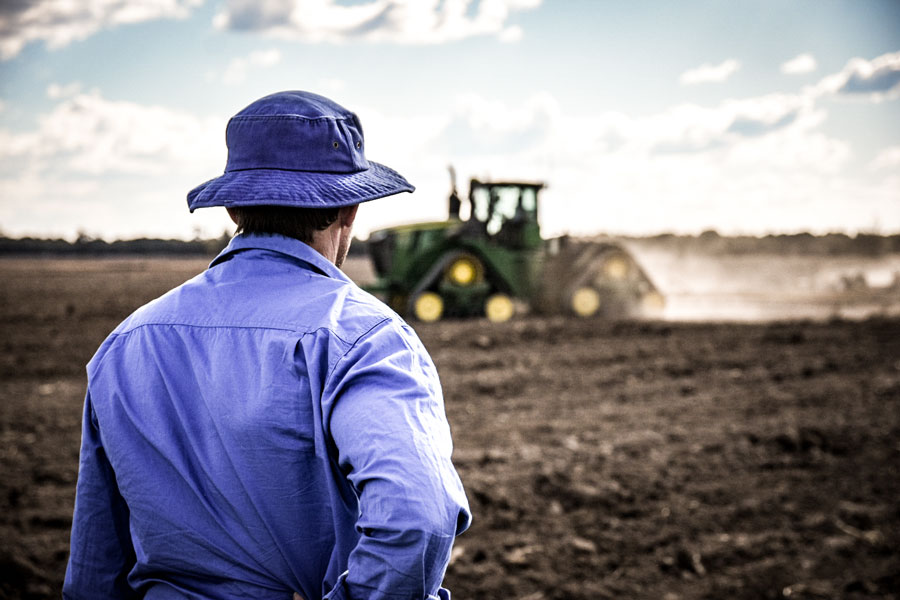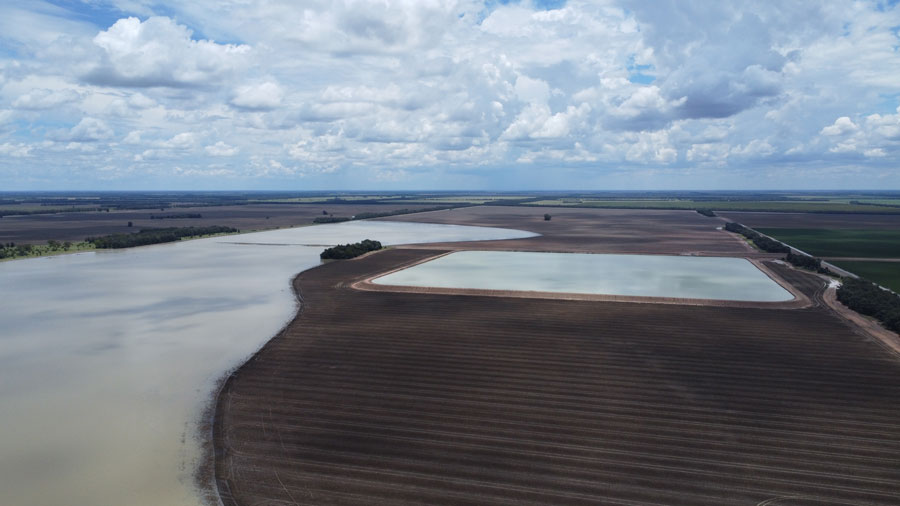Last year, when much of the country was facing the full force of La Niña, Condamine grain grower Ben Taylor had his best year on record.
It is a welcome result in any season but what makes it more unusual is that it occurred across all crops – wheat, chickpeas, sorghum and cotton – in a very wet year across melon-hole country that is prone to waterlogging.
The farm received almost double its annual rainfall in 2022, recording 961 millimetres compared with an annual average of 560mm.
Ben says yields were above-average in all crops. “And it is pretty rare to have all four crops do well in a season like that.”
He attributes the success to levelling the country, which helped take advantage of wet conditions while minimising yield losses. “Frequent soil testing and a conscious decision to not skimp on nutrition also played a significant part.”
Ben and his wife, Kate Taylor, along with Ben’s brother Sam Taylor and two full-time staff, make up Culara Farming on Queensland’s western Darling Downs.
The enterprise comprises 3750 hectares of dryland grain cropping and 250ha of overland flow irrigation. It operates a five-year rotation of wheat/chickpeas/wheat/long fallow/sorghum.
Melon holes, characteristic of Brigalow soils, make up 90 per cent of the farm. They are naturally occurring depressions surrounded by associated mounds and can lead to extreme waterlogging. This in turn can lead to nutrient and organic carbon leaching laterally and accumulating at the bottoms of the holes. The tops can be bleached, infertile and unable to hold moisture.
Evolving approach
Ben says the family’s approach to melon hole levelling has evolved over the years. He recalls helping his mother and father, Sue and Glen, level melon holes with a 24-metre land plane.
On areas of large melon holes, an old D7 cable blade dozer was used to push in the tops of large melon holes while Ben and Sam drove around on a set of ‘Freddy Flintstone’ rippers.
“This was a common area-wide practice that certainly fixed melon hole issues, but by doing that without any associated technology, we basically created large lakes that still weren’t draining very well.”
The Taylors turned that around in 2001 with the purchase of the first commercially sold GPS levelling technology, which was fitted to a Case IH 9380 tractor and Horwood Bagshaw laser bucket.

Condamine grower Ben Taylor watches a grader board in operation at Jake Hamilton’s farm. Photo: Jake Hamilton
In simple terms, the bucket follows a paddock design created once a field survey has been completed. The tractor and bucket then move the soil around to create the desired design height. This is done in the most economical manner, minimising the amount of dirt moved.
“Laser buckets aren’t new. They have been in the irrigation system for years,” Ben says. “It just took a while for it to become common in a broadacre sense.”
The GPS technology associated with a laser bucket allows for multi-grade designs that slope towards natural drainage lines, Ben says.
Rotational plan turned farm finances around
It might sound simple but a sound five-year plan, backed by nutrition and disease management, has helped improve overall enterprise wellbeing for this Condamine cotton and grain business
When a five-year rotational plan was suggested by his agronomist, Condamine grower Ben Taylor did not foresee how successful it would be.
Today, he credits the wheat/chickpea/wheat/long fallow/sorghum rotation with turning the farming enterprise around.
Earlier this year, Ben was a keynote speaker at the 2023 Australian Summer Grains Conference. His topic was titled ‘Soil Health and Precision Farming’, and he spoke about his operational approach towards good soil health and overall enterprise wellbeing.
For the Taylors, this includes sound rotational and nutrient planning to maximise yield potential. It is a strategy that began more than 10 years ago when they sought out the Goondiwindi-based MCA Agronomists firm.
“We were farming the way we were farming, which was back-to-back wheat, and it wasn’t working. We weren’t making enough money. We simply weren’t growing enough crops,” Ben says.
“We had no clear cropping plan, although we did rotate chickpeas, sorghum and dryland cotton.
“We were struggling to kill the weeds, spending lots of time on spray rigs with knockdown chemicals. We were double-knocking this and double-knocking that with no real plan, which clearly highlighted that we needed to change management and practices.”
The MCA team, led by agronomist Stuart Thorn, suggested a five-year plan. “That is MCA’s way and we have not looked back. The plan takes a lot of pressure and stress away from us as a family and it has worked. We have removed a lot of the emotions that can get in the way of good decisions.”

The Taylor farm at Condamine received almost double its annual rainfall in 2022, recording 961 millimetres compared with an annual average of 560mm.Photo: Ben Taylor
Ben says the change sounds simple but there is more to it. “You’re obviously managing disease and chemical resistance risks, logistics by not having everything planted to wheat, and you get a better time management system by spreading the crops and planting times via a five-year plan.
“We’ve definitely seen that our business has clearly become more profitable as a result of that. It’s very, very obvious.”
The plan enables the Taylors to grow as much as possible – whatever the season brings – in a profitable and sustainable manner.
Long-term planning was needed last season, he says, when urea prices were high.
“Those who weren’t waterlogged and had long-term nutrient plans in place were able to take advantage of the season.
“If nutrient plans had not been addressed in the 12 months prior to planting, some were not going to spend $1500 a tonne on urea. In my opinion, profits were left in the paddock by many growers. It all comes back to that five-year plan, soil testing and assessing every season with all the tools and information we have access to.
“This year (2023) is different again. But I know after our big crops last year, we have literally no nitrogen left in the profile. We will still have to put anywhere from 150 to 250 kilograms of urea down to grow even an average crop. We have already pre-applied using disc machines 150kg/ha of urea to date and will spread further nitrogen if the season and rain changes permit us to do so.”
As the Taylors look to the future, Ben will consider how new technology could help.
“I’ve done some initial research on both robots and drones for weed management. We’ve already got a 36-metre WeedIT. As it ages, I’d consider getting a 12m SwarmFarm-operated machine and perhaps also investigate the Single Shot drone-based weed technology. I’ve parked all my research for the moment but will come back to it.”
He says new technology will also help with future staffing issues, which many growers are facing, but he feels he does not need to rush into it.
“We have camera sprayers and good staff just now. But for those who are starting the journey into camera spraying, all this new technology offers pretty exciting opportunities.”
More information: Ben Taylor, ben@cularafarming.com.au; Sam Castor, samcastor@mcagoondi.com.au

























































